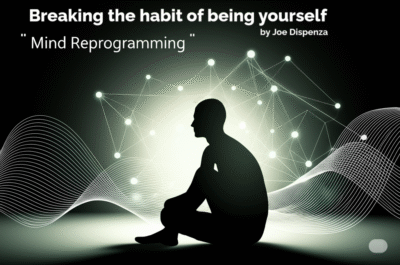Introduction
In our hurried lives, meals are often rushed or eaten distractedly. Have you paused to notice mindfulness eating, focusing not just on what but how you eat? Rather than strict diets, mindfulness eating emphasizes present-moment awareness at mealtimes, fostering healthier bodies, calmer minds, and deeper gratitude for nourishment.
Table of contents
- Introduction
- 1. Understanding the Foundations: What Lies Behind Mindfulness Eating?
- 2. The “Why”: Unveiling the Importance of Conscious Consumption and Mindfulness Eating
- 3. The “How-To”: Cultivating Your Mindful Eating Habits – A Practical Guide
- 4. Key Features and Lasting Impacts of Mindfulness Eating Habits
- Conclusion
- references
1. Understanding the Foundations: What Lies Behind Mindfulness Eating?
Before practicing mindfulness eating, grasp its underlying concepts to see why these habits matter.
1.1. What is Mindfulness, Broadly Speaking?
Mindfulness is non-judgmental awareness of thoughts, feelings, bodily sensations, and surroundings. It’s paying purposeful attention—like noticing each breath or the contact of your feet on the ground—cultivating calm curiosity rather than emptying the mind. This general awareness underpins the focused practice of mindfulness eating.
1.2. Connecting Mindfulness to Our Plates: The Emergence of These Habits
Mindfulness eating extends general mindfulness to the act of eating. Instead of inhaling meals amid distractions (phones, tasks, worries), this approach invites you to notice colors, smells, textures, tastes, and internal cues of hunger and fullness. You observe food-related thoughts—guilt, cravings—without acting on them, transforming eating into an enriching, informative experience.
1.3. What Exactly Are this Habits?
These habits involve applying mindfulness techniques before, during, and after eating:
- Hunger and Satiety Awareness: Check physical hunger (a gentle stomach ache) before eating; pause when comfortably satisfied, not merely when the plate is empty.
- Engaging All Senses: Observe sight, smell, touch, taste, and even sounds (the crunch of an apple), enhancing satisfaction and reducing needed quantity.
- Slowing the Pace: Put utensils down between bites and chew thoroughly, allowing ~20 minutes for satiety signals to register.
- Non-Judgmental Observation: Notice guilt or cravings without reacting; redirect gently to sensory experience.
- Gratitude for Food: Reflect on food’s origin and the effort behind it to deepen appreciation.
2. The “Why”: Unveiling the Importance of Conscious Consumption and Mindfulness Eating
Recognizing what mindfulness eating entails leads to understanding its profound benefits—physical, emotional, and mental.
2.1. Why Bother? The Significance of Attentive Eating for Overall Well-being
By eating attentively, you nourish intelligently: you make informed food choices aligned with health goals, savor meals more fully (helping control cravings), and foster a positive relationship with food—an investment in long-term physical and emotional health.
2.1.1. Beyond Digestion: How These Habits Impact Physical Health
- Improved Digestion: Thorough chewing aids nutrient breakdown, reducing indigestion and bloating.
- Weight Management: Attuning to hunger and fullness prevents overeating; mindful-eating interventions have shown moderate weight reduction.
- Enhanced Nutrient Absorption: Relaxed eating states optimize digestive efficiency.
- Blood Sugar Control: Slower eating and conscious food choices stabilize glucose levels, benefiting metabolic health.
2.1.2. The Mind-Gut Connection: Emotional and Mental Perks
- Reduced Food Anxiety: A non-judgmental stance frees you from guilt and restrictive cycles.
- Greater Enjoyment: Engaging senses amplifies pleasure, making simpler foods satisfying.
- Emotional-Eating Management: Pausing between urge and action helps discern true hunger from emotional triggers, cutting bing patterns.
- Improved Body Image: Trusting internal cues fosters respect for your body’s wisdom, shifting focus from appearance to well-being.
2.2. The Dangers of Mindless Eating: What We Miss by Not Cultivating this Habits
Mindless eating—distracted consumption driven by external cues—leads to overconsumption, poor digestion, reduced meal satisfaction, disconnection from body signals, and a reliance on processed convenience foods.
3. The “How-To”: Cultivating Your Mindful Eating Habits – A Practical Guide
Building mindfulness eating skills takes practice. Below are steps to integrate it into everyday life.
3.1. Preparing for a Mindful Meal: Setting the Stage
3.1.1. Creating a Conducive Environment
- Minimize Distractions: Turn off screens and phones during meals.
- Designate an Eating Space: Use a table—not a desk or couch—to signal focus.
- Set the Table & Reduce Clutter: Simple rituals and tidy surroundings encourage intention.
- Manage Ambiance: Choose quiet settings or neutral background sounds if needed.
3.1.2. Tuning In: Recognizing Hunger and Satiety Cues
- Hunger Scale: Rate hunger 1–10; eat at 3–4, stop at 6–7.
- Identify Physical vs. Emotional Hunger: Physical hunger rises gradually and any food helps; emotional is sudden with cravings.
- Pause Before Seconds: Reflect on true need before refilling.
- Notice Satiety Signals: Diminished interest, comfort, and renewed energy signal fullness.
3.2. The Art of Eating Mindfully: Step-by-Step Techniques
3.2.1. Engaging All Your Senses
- Sight: Observe colors, shapes, and textures.
- Smell: Inhale aromas, identify ingredients.
- Touch: Note temperature and texture via hands or utensils.
- Taste: Let food rest on the tongue, discern sweet, salty, sour, bitter, umami.
- Sound: Listen to crunches and chewing.
3.2.2. Slowing Down
- Utensil Pauses: Lay down fork between bites.
- Chew Thoroughly: Focus on texture and flavor evolution, aiding digestion and satiety.
- Smaller Bites & Mid-Meal Pauses: Sip water, breathe, reassess hunger.
- Avoid Rapid Eating: Consciously set an unhurried pace.
3.2.3. Chewing Thoroughly
- Initiate Digestion: Enzymes in saliva break down food.
- Improve Nutrient Absorption: Smaller particles increase digestive efficiency.
- Prevent Overeating: More chewing allows fullness signals time to arise.
- Enhance Flavor: Extended mastication releases nuanced tastes.
Tip: Count 20–40 chews per bite for a few bites to build the habit.
3.2.4. Portion Awareness
- Modest Servings: Start smaller—return for seconds only if still hungry.
- Smaller Dinnerware: Plates and bowls influence perceived fullness.
- Second-Serving Check-In: Use the hunger scale.
- Eat to Satisfaction, Not Stuffing: Honor a comfortable 6–7 level.
- Plate-Clearing Not Mandatory: Prioritize body cues over external rules.
3.2.5. Appreciating Your Food
- Consider the Source: Reflect on the journey from farm to plate.
- Acknowledge Nourishment: View food as vital energy.
- Express Silent Thanks: A brief moment of gratitude enhances experience.
- Notice Effort: Recognize cooking or preparation care.
3.3. Integrating These Habits into a Busy Lifestyle
3.3.1. Starting Small
- One Mindful Meal: Begin with a single meal daily or weekly.
- First Five Bites: Focus mindfully on the opening bites.
- Mindful Snacking & Sips: Apply the same awareness to snacks and drinks.
- Eliminate One Distraction: Choose the biggest mealtime interruption and remove it.
3.3.2. Overcoming Common Challenges
- Time Constraints: Even brief mindful moments help.
- Social Settings: Pace yourself and attend to your own signals discreetly.
- Forgetting to Be Mindful: Gently refocus without self-criticism.
- Boredom or Restlessness: Cultivate curiosity about flavors and textures.
- External Pressure: Explain you’re savoring food or aiding digestion.
4. Key Features and Lasting Impacts of Mindfulness Eating Habits
Consistent mindfulness eating reshapes your relationship with food and life.
4.1. The Transformative Effects of Consistency
- Healthier Food Relationship: Food becomes nourishment and pleasure, not anxiety.
- Enhanced Self-Awareness: Heightened attunement to hunger, fullness, and emotions.
- Greater Enjoyment of Simple Pleasures: Savored eating spills over into everyday joy.
- Sustainable Healthy Patterns: Internal cues, not external rules, guide you.
- Empowerment: You control choices, not cravings.
4.2. Common Misconceptions Debunked
- It’s Just a Weight-Loss Diet – Primary goal is awareness and enjoyment; weight regulation may follow naturally.
- It’s Complex and Time-Consuming – Small mindful practices can have big impact.
- You Must Eat “Perfectly Healthy” Foods – Any food can be eaten mindfully; focus is on how, not what.
- You Must Eat Alone in Silence – Quiet helps, but you can practice mindfulness eating socially by inwardly focusing on the experience.
Conclusion
Your journey with this Habits begins with simple attention to each bite. No overhaul is needed—just curiosity, presence, and kindness toward yourself. Next time you eat, will you simply consume, or will you consciously connect and truly nourish yourself, one mindful bite at a time?
references
Katterman, Shawn N., et al. (2014). Eating Behaviors, 15(2), 197–204.
Link:https://scholar.google.com/scholar?q=Katterman,+Shawn+N.,+et+al.+(2014).+Mindfulness+meditation+as+an+intervention+for+binge+eating
O’Reilly, G. A., Cook, L., Spruijt‐Metz, D., & Black, D. S. (2014). Obesity Reviews, 15(6), 453–461.
Link: https://onlinelibrary.wiley.com/doi/abs/10.1111/obr.12156
Radin, Tricia S., et al. (2023). Appetite, 188, 106951.
Link: https://doi.org/10.1016/j.appet.2023.106951











